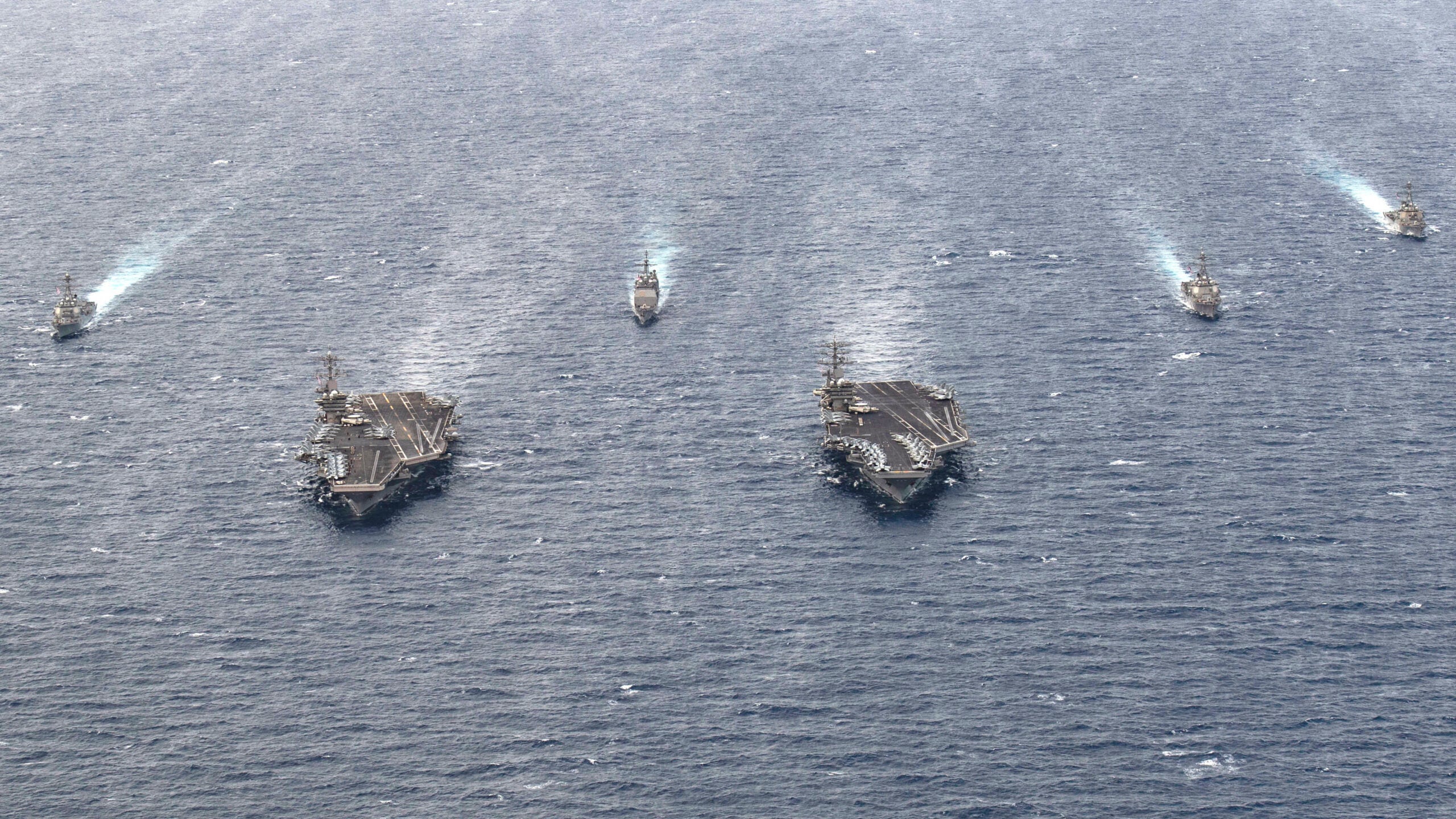The U.S. Navy’s nuclear-powered aircraft carrier USS Nimitz, which had its deployment extended last month, returning to the Middle East in light of continued tensions with Iran, is now in the South China Sea, where it sailed alongside its sister ship, USS Theodore Roosevelt, today. The two carriers and their respective strike groups operating together send a powerful signal to China, which has been increasingly flexing its military muscles in this hotly disputed region in recent weeks.
The Navy said that the two carriers worked together in “a highly trafficked area to demonstrate the U.S. Navy’s ability to operate in challenging environments” and conducted exercises aimed at increasing interoperability, as well as command and control capabilities. Theodore Roosevelt is part of Carrier Strike Group 9 (CSG-9), which also includes, in part, Carrier Air Wing 11 (CVW-11), the Ticonderoga class cruiser USS Bunker Hill, and the Arleigh Burke class destroyers USS Russell and USS John Finn. Nimitz’s CSG-11 consists of CVW-17, as well as the Ticonderoga class USS Princeton and the Arleigh Burke class USS Sterett.
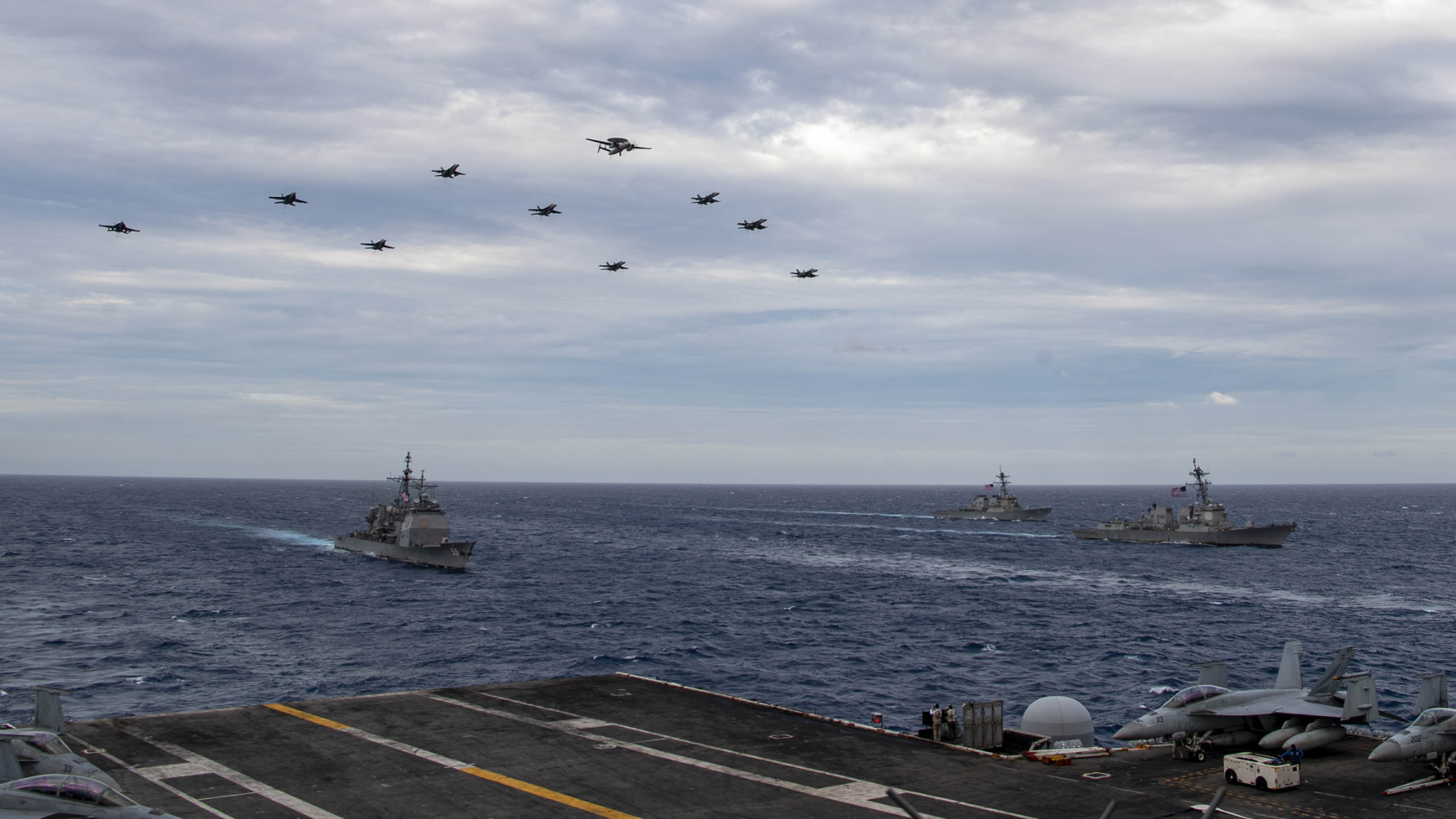
“Training with Carrier Strike Group Eleven in the South China Sea is a tremendously valuable opportunity,” said Navy Rear Admiral Doug Verissimo, commander of CSG-9. “Through operations like this, we ensure that we are tactically proficient to meet the challenge of maintaining peace and we are able to continue to show our partners and allies in the region that we are committed to promoting a Free and Open Indo-Pacific.”
“We are committed to ensuring the lawful use of the sea that all nations enjoy under international law,” added Navy Rear Admiral Jim Kirk, the commander of CSG-11.
The latest dual-carrier maneuvers continue high-profile U.S. Navy operations in the South China Sea, which are, in part, intended as a counter to growing Chinese assertiveness in the region. Using the “nine-dash line,” Beijing claims almost 90 percent of the disputed waters, which are crisscrossed by vital maritime trade routes, despite ongoing disputes with countries including Malaysia, the Philippines, Taiwan, and Vietnam. In recent years, China has expanded its efforts to reclaimed and militarize a number of islands in these waters, providing bases that could be used to restrict maritime and aerial traffic if Beijing so desired.
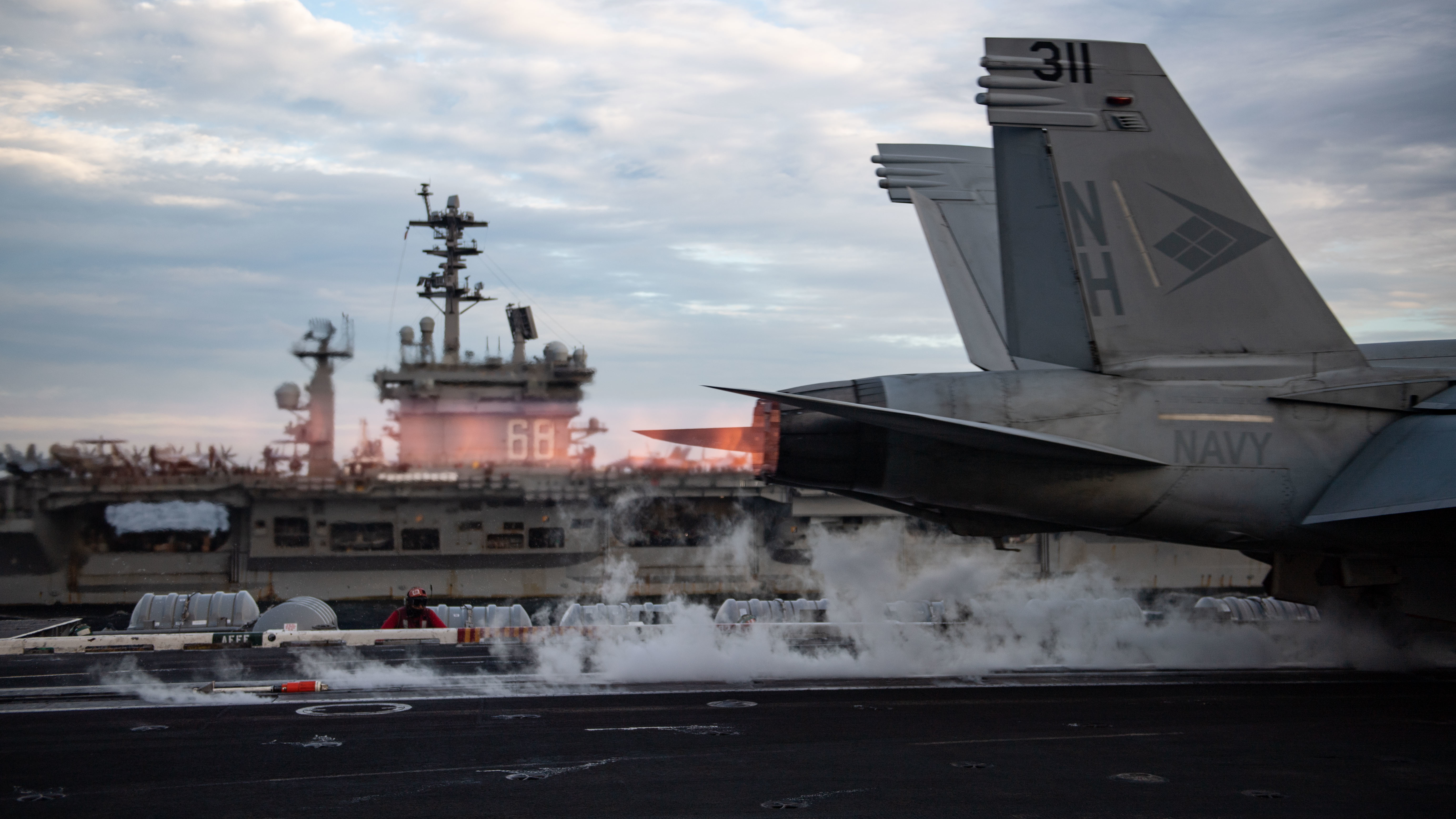
These same two CSGs had previously conducted dual-carrier operations in June of last year, in the Philippine Sea. The last time that dual-carrier operations took place in the South China Sea was in July 2020, when the Ronald Reagan and Nimitz CSGs twice operated together in these waters.
Open-source maritime tracking data suggested that the dual-carrier operations came to an end earlier today when the cruiser USS Princeton of CSG 11 departed the South China Sea, likely accompanied by USS Nimitz.
The latest exercise comes amid another spike in Chinese military aviation activity around the northern end of the South China Sea. Last January 31, the Taiwanese Ministry of Defense reported that eight Chinese aircraft, including fighter jets, maritime patrol, and surveillance types, had flown into the southwestern corner of its Air Defense Identification Zone, or ADIZ, in the previous two days.
This uptick in activity has also included reported mock attack runs made by Chinese aircraft on the USS Theodore Roosevelt. According to the British newspaper the Financial Times, individuals familiar with this incident had heard radio chatter of the Chinese pilots going through the procedures involved in releasing anti-ship cruise missiles.
For its part, the USS Nimitz departed its homeport of Bremerton, Washington, as long ago as April 2020. The Nimitz is now finally heading back to Bremerton, after around 10 months at sea — longer than is typically required. Since last summer, the Nimitz CSG has mainly been operating just outside the Persian Gulf but also ventured further afield for the Malabar exercise with the Indian Navy in November, as well as contributing to Operation Octave Quartz in December, during which around 700 U.S. troops were moved out of Somalia to other locations in Africa. You can read more about the operation in this previous War Zone story.
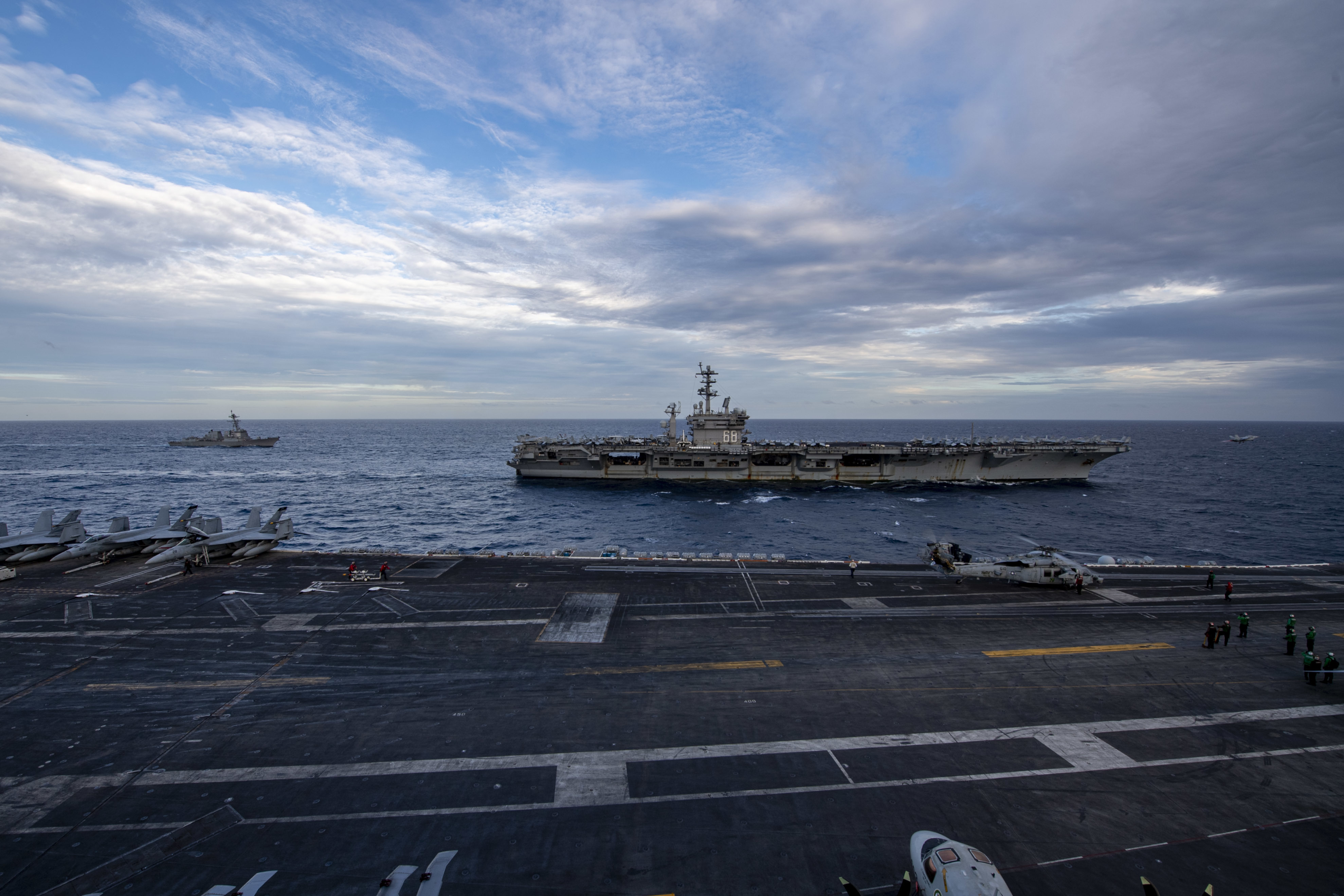
Considering how long this carrier has now been at sea, it makes sense that the exercise with its fellow Nimitz class carrier in the South China Sea would be of relatively short duration. More generally, the Navy is grappling with the strain being put on its carrier fleets amid a surge in demand for them to support U.S. military operations around the world, but at a time when a significant number of the flattops are tied up undergoing maintenance and major overhauls. The USS Theodore Roosevelt had already completed one operational cruise in 2020 before leaving its home base of San Diego, California, in December to begin its latest scheduled deployment to the Indo-Pacific region. You can find out more about these so-called “double pump” deployments in this previous article.
Elsewhere, the Makin Island Amphibious Ready Group (ARG) — which includes the Wasp class landing helicopter dock USS Makin Island (LHD-8) and the landing platform docks USS San Diego and USS Somerset — swapped places with the Nimitz Carrier Strike Group in the North Arabian Sea last week. The amphibious warships arrived on station in the Middle East after having operated off the Horn of Africa. As of February 9, the Makin Island ARG had transited the Strait of Hormuz and is now in the Persian Gulf.
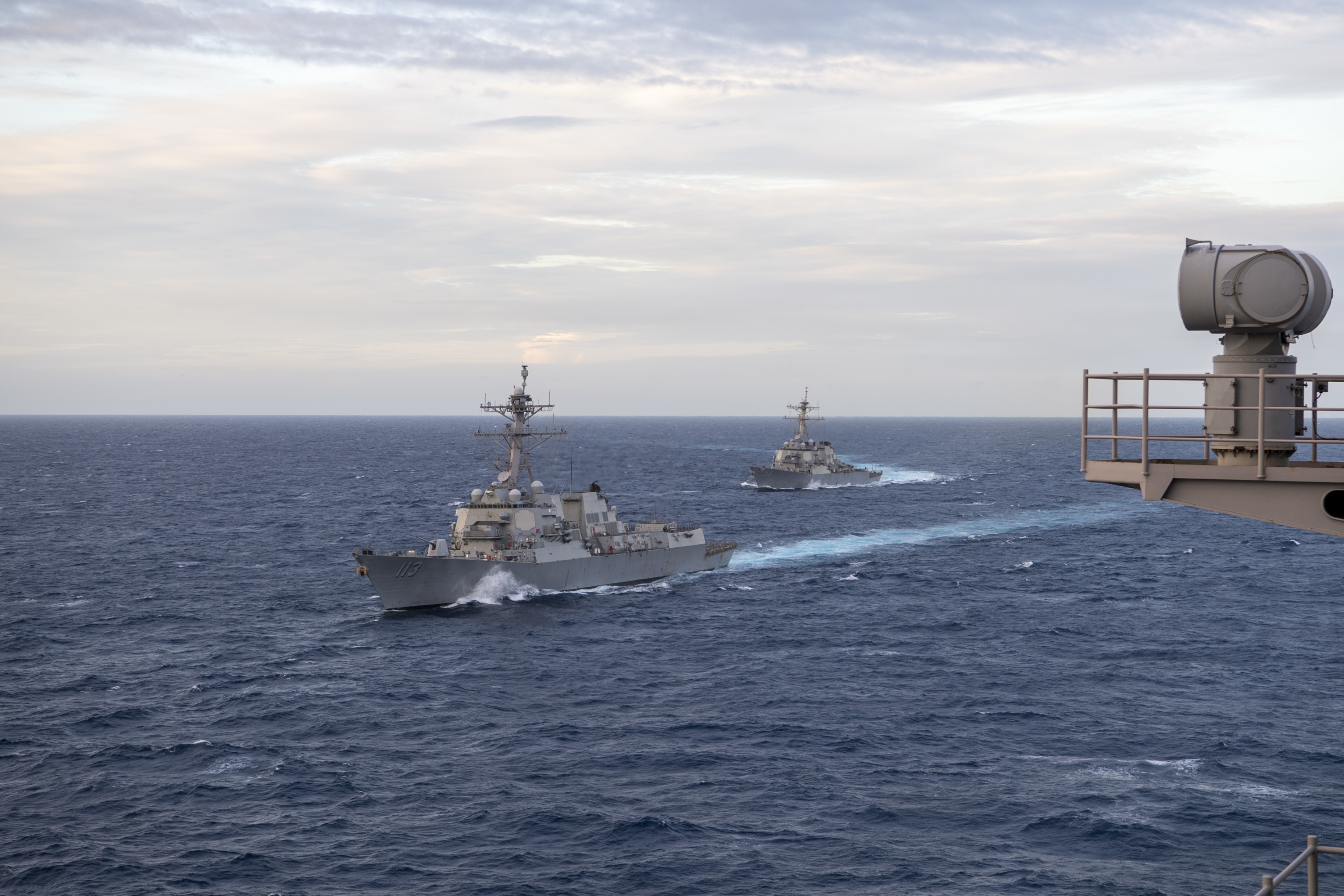
When USS Nimitz left the Middle East, leaving that region without an aircraft carrier, the Pentagon Press Secretary John F. Kirby explained that the number of big-deck carriers available to the United States at any given time made it a case of balancing requirements from various parts of the world. “Every decision that we make with military forces — air, ground or naval — and certainly, decisions that you make with respect to a capital asset, like an aircraft carrier and its associated, supporting Strike Group is a decision driven by a frank assessment of the threats in the area, and also a frank consideration of the capabilities themselves,” Kirby said.
The Middle East may not be left without a big-deck carrier for long, however, with rumors that the USS Dwight D. Eisenhower could be on its way there, or is at least heading to the wider region.
Meanwhile, in the Indo-Pacific region, other countries, too, continue to assert their rights to freedom of movement in the South China Sea, including France, which recently sent the Rubis class nuclear-powered attack submarine
Émeraude through the waters.
This spring, the British aircraft carrier HMS Queen Elizabeth will also venture into the Pacific theater, with plans for the Royal Navy’s flagship to take part in joint exercises with Japanese maritime forces, as part of the Carrier Strike Group 21 deployment. “Japan and the U.K. have forged a close defense and security partnership that is being elevated to new heights this year when the U.K. Carrier Strike Group visits the Indo-Pacific,” U.K. Defense Secretary Ben Wallace said. The British carrier is widely expected to take part in navigation patrols in the disputed South China Sea, too.
Clearly, the South China Sea is a particular flashpoint, but tensions between Washington and Beijing have also recently flared up over issues including Taiwan, trade, espionage, and the COVID-19 pandemic. Only weeks into his presidency, President Joe Biden has already stated that China presents the “most critical challenge” to the United States.
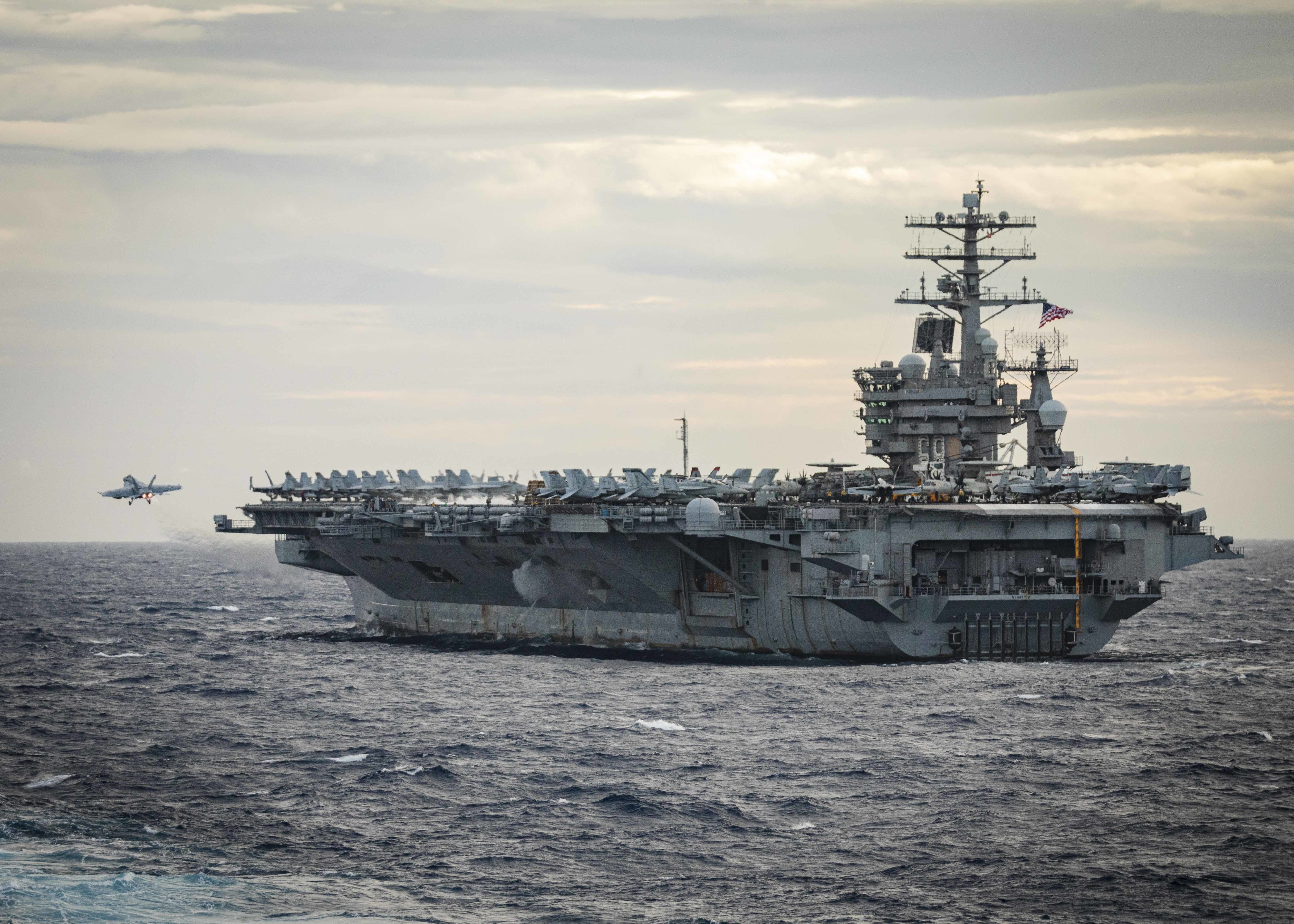
While the United States flying the flag in the South China Sea and signaling to its allies was a critical foreign policy tool under the previous Trump Administration, the latest dual-carrier maneuvers suggest that these activities are likely to continue, for now at least, under President Biden.
Contact the author: thomas@thedrive.com
